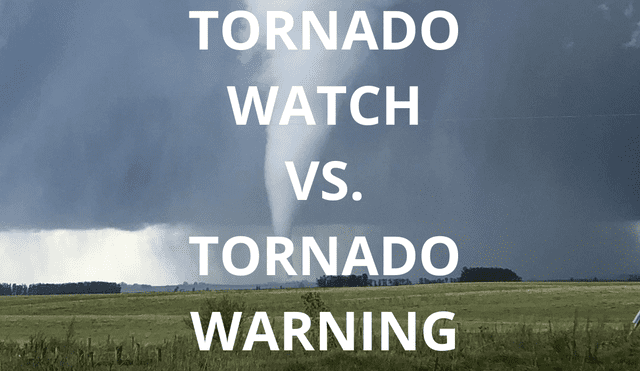Tornado warning vs. watch explained: Prepare for severe weather
Understand the difference between a tornado warning and a watch to stay safe during severe weather. Learn key tips for preparedness and how to react when these alerts are issued.

When severe weather hits, particularly in regions prone to tornadoes, understanding the difference between a tornado warning vs watch can be the difference between safety and danger. Both alerts are issued by the National Weather Service, but they carry different meanings and require different responses.
As severe weather rolls through various states, including high winds and potential tornadoes, it's essential to stay informed and prepared. On March 5, areas like the Grand Strand, Pee Dee, Border Belt and a lot more in other states; are bracing for extreme weather conditions. Preparedness and planning ahead are key to staying safe when severe weather strikes.
What is a tornado watch?
A tornado watch is issued when weather conditions are favorable for the development of tornadoes. This means that the atmosphere has the potential for tornado formation, but one has not been spotted yet. In a watch situation, tornadoes are not imminent, but it is important to stay alert.
During a tornado watch, residents should monitor local weather reports closely and be ready to act quickly if conditions change. It’s a good time to review your emergency plan, ensure you have supplies like water and batteries, and keep an eye on the sky for any developing storms. Tornado watches can cover several counties or even states, depending on the severity of the storm.
What is a tornado warning?
A tornado warning is far more serious. It means that a tornado has either been sighted or indicated by weather radar. This alert is issued when a tornado is imminent or already occurring in your area. In this case, it’s crucial to take immediate action to protect yourself and your family.
When a tornado warning is issued, seek shelter immediately. The safest place is in a basement or storm cellar, or in a small, windowless interior room on the lowest level of your home. Stay away from doors and windows, and cover your head with something sturdy to protect yourself from flying debris.
Tornado warning vs watch: Key differences
| Tornado Watch | Tornado Warning |
|---|---|
| Conditions are favorable for tornado formation | A tornado has been spotted or indicated by radar |
| Tornadoes are not yet imminent, but could develop | Tornado is imminent or already occurring |
| Remain alert and prepared | Seek shelter immediately |
Understanding these differences can help you stay safe during severe weather events. A watch means it's time to stay alert, while a warning requires immediate action.
What to do during a tornado watch vs warning
During a Tornado Watch:
- Monitor weather updates regularly through news or a weather app.
- Stay in contact with family and neighbors to ensure everyone is informed.
- Review your emergency plan, including where to shelter and how to communicate.
- Keep your emergency kit ready, including essentials like food, water, and flashlights.

A Tornado watch means that the weather has all the condition for the tornado to happen but hasn't yet, a warning means it is already on its way. Photo: San Antonio Express
During a Tornado Warning:
- Immediately take cover in a basement or interior room without windows.
- Avoid taking shelter in a mobile home or under an overpass.
- Stay away from doors and windows.
- Wait for an official "all clear" message before emerging from your shelter.













